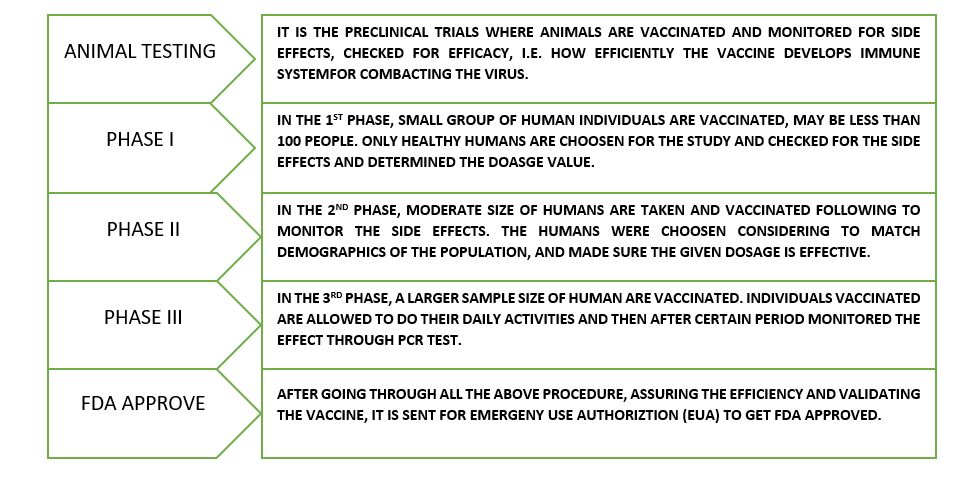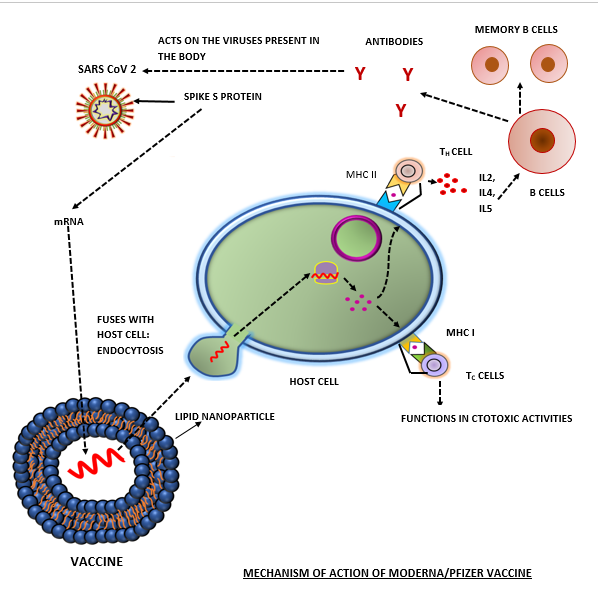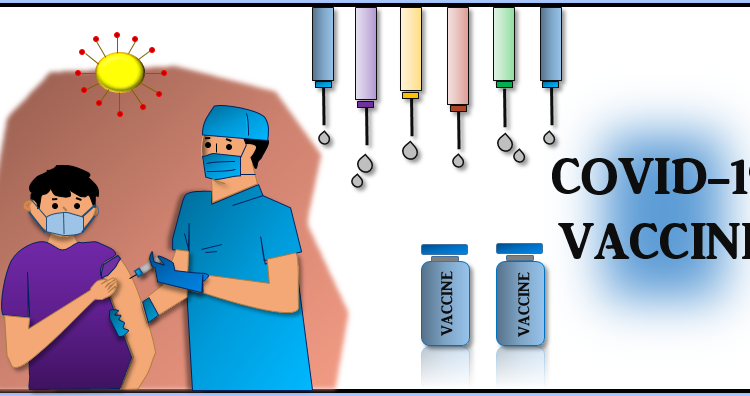Before knowing about how MODERNA, PFIZER/BIONTECH, ASTREZENCA vaccines were developed and their mechanism of action, first it’s important to known that what is the common procedure for developing a vaccine.
1. DEVELOPMENT OF VACCINE:
For developing a certain vaccine one company has to follow certain procedure and guidelines with a goal of developing a safe and effective vaccine which can used for the protection of an individual from a disease as well as to overcome the infection. There are five basic steps that were followed to develop the COVID-19 vaccines. They are as follows:

HOW VACCINES WORK?
MECHANISM OF ACTION:
1) MODERNA & PFIZER/BIONTECH:
- Both of the companies uses the same technology i.e. mRNA technology thus have the same mechanism of action on the host cells.
- The vaccine developed by the Moderna and Pfizer is nothing but the lipid nanoparticle enclosing mRNA which encodes for the spike proteins of the Corona virus.
- The Spike S proteins which is present on the surface of the virus defines the virulence and virus pathogenicity, thus this proteins coding mRNA are used and enclosed and incorporated into lipid nanoparticle. The lipid nanoparticles layer acts like the lipid bilayer membrane.
- This vaccine when injected to humans develops an immune response against the virus.

- How does the vaccine develops an immunogenic response?
- The mRNA enclosed in the lipid nanoparticle enters into the host cell by fusing with the plasma membrane.
- After invasion into the host cell, the mRNA uses the host cell’s ribosomes present in the cytoplasm for the translation process.
- The translational process produces the spike protein molecules.
- These spike protein molecules generates the immunogenic response by binding to the specific receptors present on the host cell membrane.
- The specific receptors are the MHC-II and MHC-I receptors which are present on antigen presenting cells such as B cells, Dendritic cells, Macrophages.
- After the binding of the spike protein molecules to the MHC-II, T helper cells get activated. The receptors present on the T Helper cell are TCR and they even have CD4 receptor which binds to the MHC-II.
- Thus this interaction between the MHC-II and T helper cells produces cytokines such as interleukins which activates the B cells.
- The activated B cells further undergoes clonal differentiation generating antibodies against the virus present in the body and produces memory B cells.
- The antibodies produced will act on the virus and will either neutralize or kill the virus.
- In future, if a person gets infected with SARS-CoV2, the body will act the cytotoxic T cells gets activated and binds to the MHC-I generating destructive molecules that destroys the host cells and even amplifies the immunogenic response by releasing cytokines.
